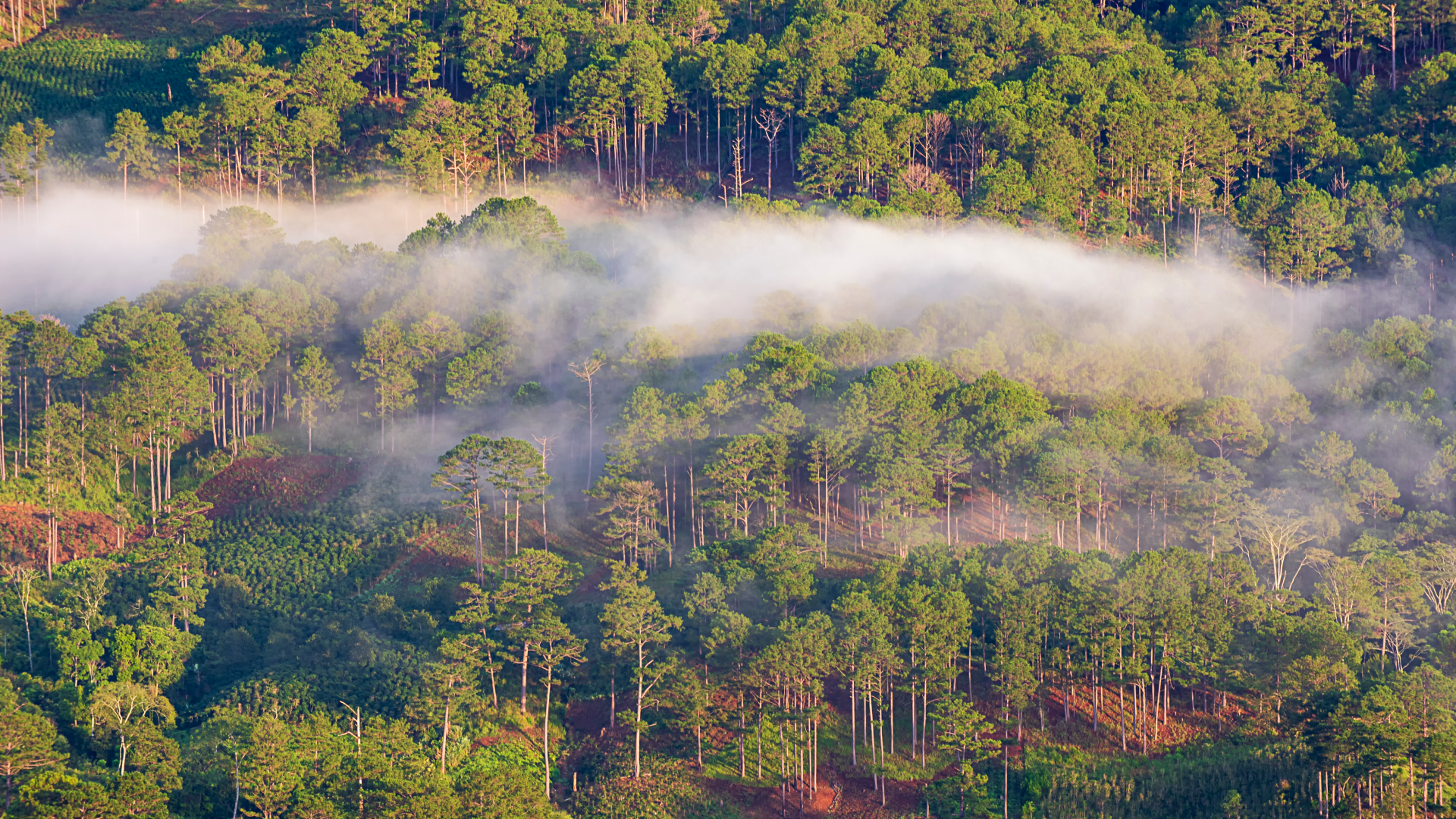In October of 2018, the Intergovernmental Panel on Climate Change (IPCC) released a report that sent a stern warning to the world: If we don’t drastically cut carbon emissions in the next 12 years, we’ll have irreversibly worse droughts, flooding, extreme heat, and climate change-related poverty.
Here in the United States, the record-breaking wildfire seasons, stronger hurricanes, and historic cold snaps that hit Texas in early 2021 have given us a grim look at the new normal if we continue down our current high-emissions trajectory. But perhaps even more disconcerting is that many of the most egregious impacts of climate change may not be immediately obvious or visible.
Without decisive action to mitigate climate change, frequent droughts will threaten jobs and agricultural yields in Oklahoma and Texas; extreme heat will devastate an already high proportion of vulnerable residents in Mississippi and Kentucky; and the number of homes with flood risk will increase significantly in Louisiana and Delaware, according to our 2021 Policygenius Best & Worst States for Climate Change Index.
Fortunately, we have the technology and know-how to meet our emissions target by 2030 and beyond, and many U.S. states have stepped up to meet the challenges of the IPCC and the Paris Climate Agreement. However, several of the U.S. states most vulnerable to climate disasters are actually the least prepared to withstand current and future risks, according to Climate Central, a group of scientists and researchers that study the effects of climate change.
Which states are the best and worst for climate change?
To calculate our index, we ranked each of the contiguous 48 states on several climate change-related factors. We then created a score out of 100 for each state based on these rankings. A higher score means a better outlook in a low or high-emissions future, and a lower score means a worse outlook.
The factors that went into this analysis were grouped into the following five categories. We then ranked states from best to worst for each category.
Drought: The likelihood of negative economic impacts as a result of drought, the number of people and fresh water sources exposed, and the state's ability to recover or adapt to a future with drought
Extreme heat: Projected number of dangerously hot days by 2050 and the percentage of people vulnerable to dangerously high temperatures
Wildfires: Fraction of housing units directly or indirectly exposed to wildfire, as well as wildfire likelihood and home susceptibility
Flooding: Percentage of people living in 100 and 500-year floodplains, projected 30-year increase in number of properties with flood risk, and the percentage of the population living in a 100-year coastal floodplain
Climate change preparedness: How well each state is responding to current and future climate change threats
The five best states for climate change
1. Michigan
The Great Lakes State takes the top spot in our index thanks in large part to its fairly low susceptibility to most of the major climate threats. It is no lower than 20th out of 48 states in any of the major categories. Michigan also received a respectable B grade in preparedness from Climate Central, which noted actions the state has taken to adapt and improve resilience to climate change-related drought.
2. Vermont
Vermont secured the second spot in our index primarily due to its low risk of extreme heat. In fact, in a low emissions scenario, Vermont is only projected to see one day per year with the heat index above 100 degrees by 2050, according to the Union of Concerned Scientists. Additionally, Green Mountain State residents are among the least vulnerable to extreme heat, as only about 1.76% of the population is under the age of five or over the age of 65 and living in poverty.
3. Pennsylvania
Coming in third is Pennsylvania, a state where drought isn’t predicted to be a major issue as we progress into the middle of the 21st century. Pennsylvania’s low drought vulnerability is due to its low exposure (how often the state experiences droughts) and low sensitivity (the likelihood of negative economic outcomes as a result of drought). Pennsylvania also scored a perfect A on Climate Central’s preparedness report card, signaling that the state is well-prepared to take on the various climate threats impacting its environment and residents.
4. Colorado
At number four we have Colorado, a state with considerable wildfire and water-stress risk but low susceptibility to extreme heat. Like Vermont, Colorado is only expected to see one day with the heat index above 100 degrees by 2050 (in a low emissions scenario) and its population is the third-least vulnerable to extreme heat of any U.S. state.
5. Minnesota
The North Star state comes in fifth thanks to its relatively low flood risk. Only around 3% of the Minnesota population lives in 100- and 500-year floodplains, according to a 2017 report by the NYU Furman Center. Furthermore, in the next 30 years, the state is only expected to see a 1.4% increase in the number of properties with flood risk, according to Flood Factor.
The five worst states for climate change
1. Florida
No state in the U.S. has a more dire climate change outlook than Florida, a state that ranks as a top-five worst state for both extreme heat and flooding. Even in a low emissions scenario, Florida is still expected to see a whopping 86 days with the heat index above 100 degrees by 2050, a 61-day increase over the historical average. It doesn’t help that the Sunshine State has the 6th most heat-vulnerable population. In addition to heat, sea level rise and other factors are expected to increase the number of properties with flood risk by 17.5% in the next 30 years, not to mention Florida already has the second highest number of residents living in inland and coastal floodplains. The lone bright point we observed in our assessment of Florida is the B+ grade the state received for future wildfire planning.
2. Mississippi
Mississippi comes in as the second-worst state for climate change in large part due to its residents being the most vulnerable to extreme heat of any state. It’s also projected to have 68 days with a heat index north of 100 degrees by 2050 in a low emissions future. As a Gulf Coast state, Mississippi is also vulnerable to sea level rise and coastal flooding, coming in as the 9th most at-risk state for that category. Perhaps most alarming are the lack of mitigation efforts at the state level. Climate Central scored Mississippi an F for overall climate change preparedness, noting that while the state has done a decent job at addressing current risks, it’s done virtually nothing to address future vulnerabilities.
3. Louisiana
Louisiana scored the third-worst of any state for much of the same reasons that Florida and Mississippi scored so low: extreme heat risk to its population and a higher flood risk than anywhere else in the country. Flood Factor projects that Louisiana will see a 62.8% increase in the number of properties with flood risk in the next 30 years. That’s nearly three times higher than Delaware, the state with the second-highest projected increase. Additionally, over 20% of Louisiana’s population is already in a 100-year coastal floodplain, or an area with a 1% or greater chance of being flooded in any given year.
4. Texas
Coming in as the fourth-worst state for climate change is Texas, a state that is large and ecologically diverse but still prone to climate change-related risk regardless of where you are in the Lone Star State. Texas is particularly impacted by drought and water stress in the inland regions, and devastating flooding and hurricane storm surge in the coastal areas of the state. Texas hasn’t been doing its residents any favors either, scoring a failing grade from Climate Central for its lack of climate change preparedness.
5. Arkansas
Arkansas is the fifth-worst state for climate change in our index, as rising temperatures in the state are expected to lead to considerable heat stress and higher wildfire risk. Like two other states in our top five, Arkansas has done almost nothing to protect its residents from the impacts of climate change, scoring an F grade with Climate Central.
How to protect your home against climate change
As the impacts of climate change worsen, homeowners insurance is getting more expensive and harder to obtain in states that are considered to be at high risk of natural disasters. Many insurance companies are choosing not to insure homes in areas with increased risk of wildfires, hurricanes, and tornadoes, or are significantly increasing rates to make up for the unprecedented losses in recent years.
“While insurance companies generally don’t set their rates proportional to the changing climate, homeowners insurance will continue to get more expensive as the frequency of extreme weather increases," says Fabio Faschi, property and casualty lead at Policygenius. According to Faschi, insurance companies are also closely monitoring climate change indicators like sea level rise and the frequency of heat waves and droughts, since both lead to more catastrophic flooding and wildfires.
Homeowners who find themselves short on coverage options or facing a significant rate increase at renewal don’t necessarily need to get up and move. Insurance companies are more likely to insure homes with features that protect it, such as a fire or hail-resistant roof or storm shutters. It also helps to know where to look for coverage.
“If no mainstream insurer is able to provide coverage, consult an independent agency that works with multiple insurance companies," says Faschi. If you’re not able to find homeowners insurance on the private market, contact your state’s insurance department who can help you find specialized last-resort coverage to protect your home and personal belongings.
Image credit: Getty Images / Khanh Bui


